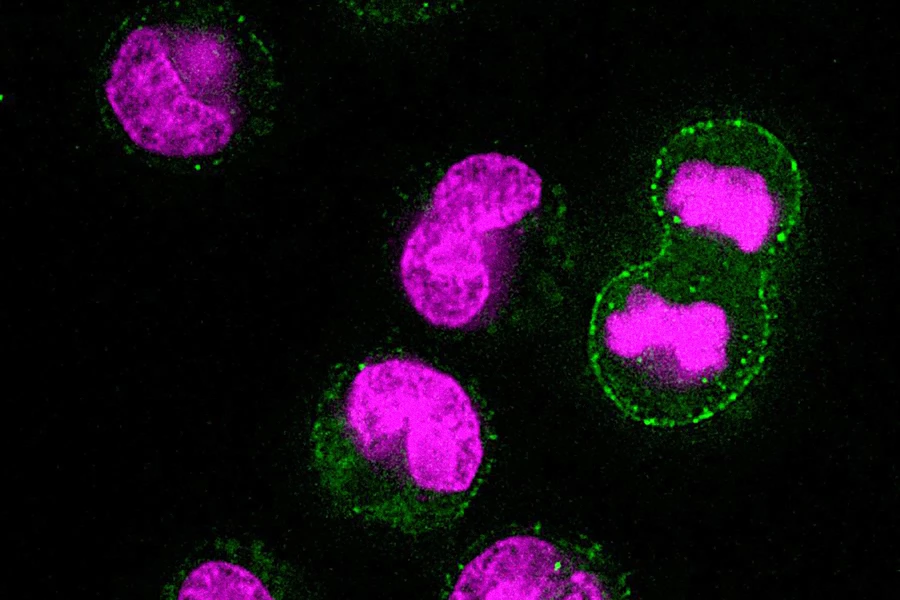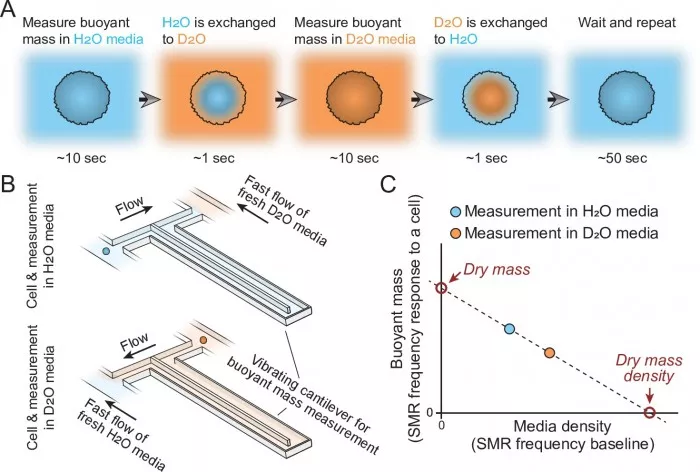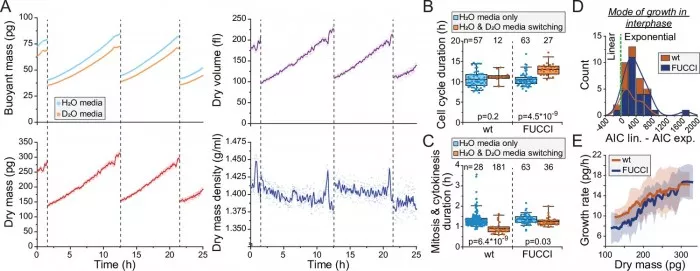According to new atlas, the technology our cells use to deal with waste provides us with some exciting ways to potentially intervene in their behavior, whether blocking these "garbage" treatment systems to eliminate cancer cells or repairing their defects to treat Alzheimer's disease. MIT research shows how this activity is enhanced during cell division, and the newly discovered mechanism may provide scientists with a "switch" to treat this kind of disease**

The breakthrough focused on cell cleaners called lysosomes and came as MIT researchers developed a new method to measure the quality of cell drying. The technology has been brewing for years and involves comparing cell measurements in normal and heavy water, from which they can calculate their dry mass. This technology is known as progress in several aspects. Heavy water is toxic to cells, so the previous method can only measure each cell once, and this system can measure repeatedly. It also provides insight into cell density and composition.
Teemu Miettinen, lead author of the study, said: "Our idea is that if we try to minimize the contact between cells and heavy water, we can design the system so that we can repeat this measurement over a long period of time without damaging cells. This enables us to track not only the dry mass of cells, which others have done using microscope methods, but also the density of dry mass, which enables us to understand the biomolecular composition of cells."

The new tool is deployed to study a way of cell division called mitosis. Scientists try to understand what happens to cell quality and composition throughout the process. Scientists conducted experiments on cancer cells, which divide more frequently than normal healthy cells. Scientists found that when cells enter mitosis, the dry mass actually decreases, and once the cell division is completed, the mass will return.
Further investigation showed that when cells entered mitosis, they were strengthening lysosomal activity. These organelles are responsible for the decomposition and disposal of cellular waste, a process known as exocytosis. Lysosomes do so enthusiastically that cells lose about four percent of their mass during division.
"Our hypothesis is that cells may be throwing away what they're accumulating, toxic ingredients, or just something dysfunctional that you don't want to exist," Miettinen said
The discovery of this mechanism may have an impact on the way we treat diseases. Cancer cells divide frequently and are known to expel some chemotherapeutic drugs through exocytosis, which helps them become resistant to treatment. The researchers' idea is that if exocytosis can be prevented, it can make cancer cells more vulnerable to this treatment.
On the other hand, nerve cells in the brain do not divide at all, which means that they do not experience this stage of enhanced lysozyme secretion in vitro. This theoretically leaves the door for the accumulation of toxic amyloid and tau proteins related to the pathogenesis of Alzheimer's disease.

Researchers have previously seen that lysosomal activity is involved in the study of Alzheimer's disease. A 2019 study showed that these toxic proteins can flip their molecular structure and present their "mirror image" to lysosomes, basically making them unable to digest and be removed. Other studies have suggested that the accumulation of dysfunctional lysosomes in the brain actually accelerates the accumulation of proteins, and the removal of failed lysosomes may be a treatment.
This new understanding of lysosomal activity and its role in cell division raises more interesting possibilities not only for the treatment of Alzheimer's disease, but also for the treatment of other diseases. Finding a way to manipulate this mechanism can effectively provide us with a "switch" to shape the way cells remove toxic products.
Miettinen said: "In some diseases, we may want to improve exocytosis, such as neurodegenerative diseases, but in diseases such as cancer, we may want to reduce it. In the future, if we can better understand the molecular mechanism behind this and find a way to trigger it outside mitosis or prevent it during mitosis, we can really use a new switcher in the treatment of diseases."
The study was published in eLife 》In the magazine.